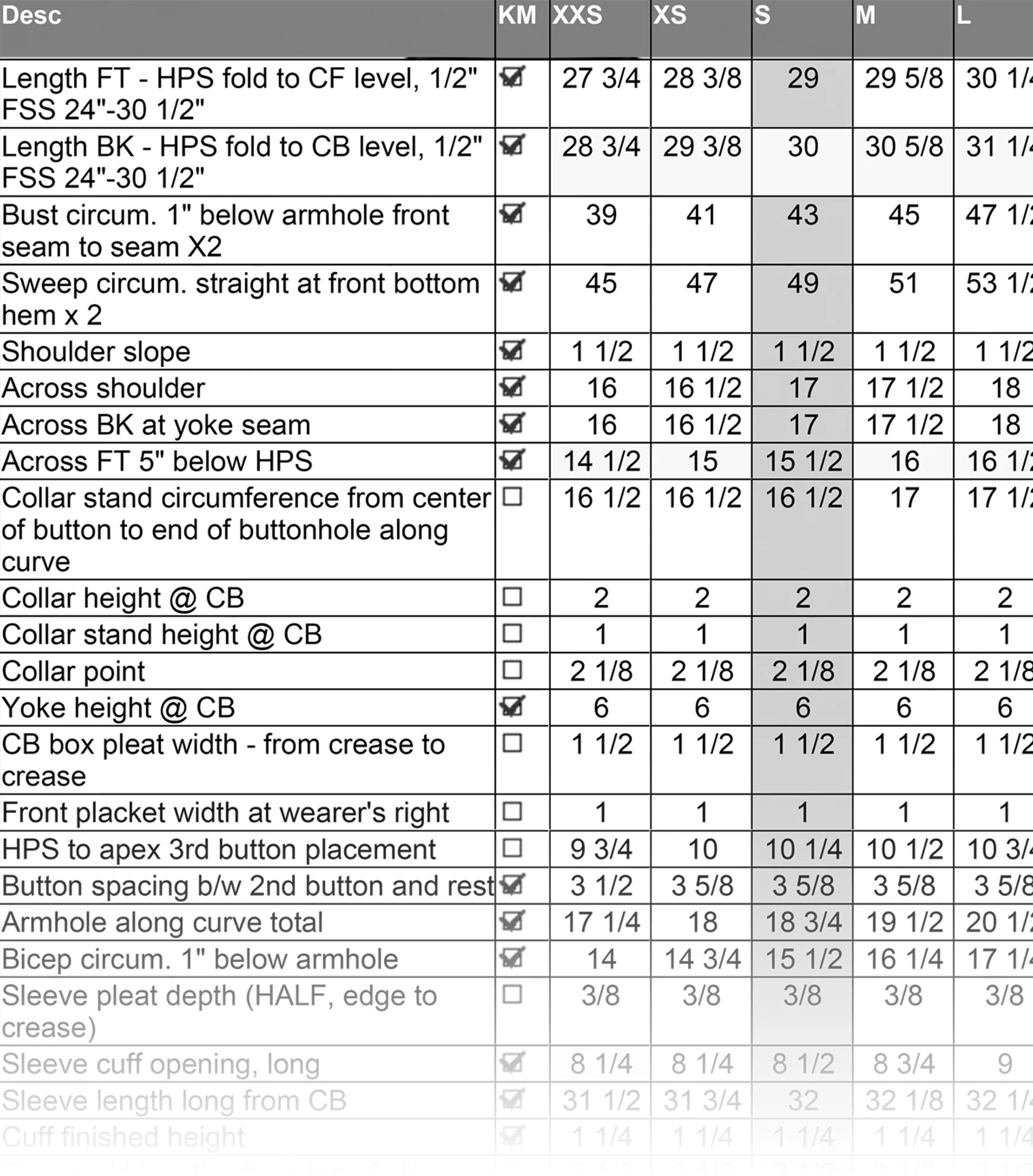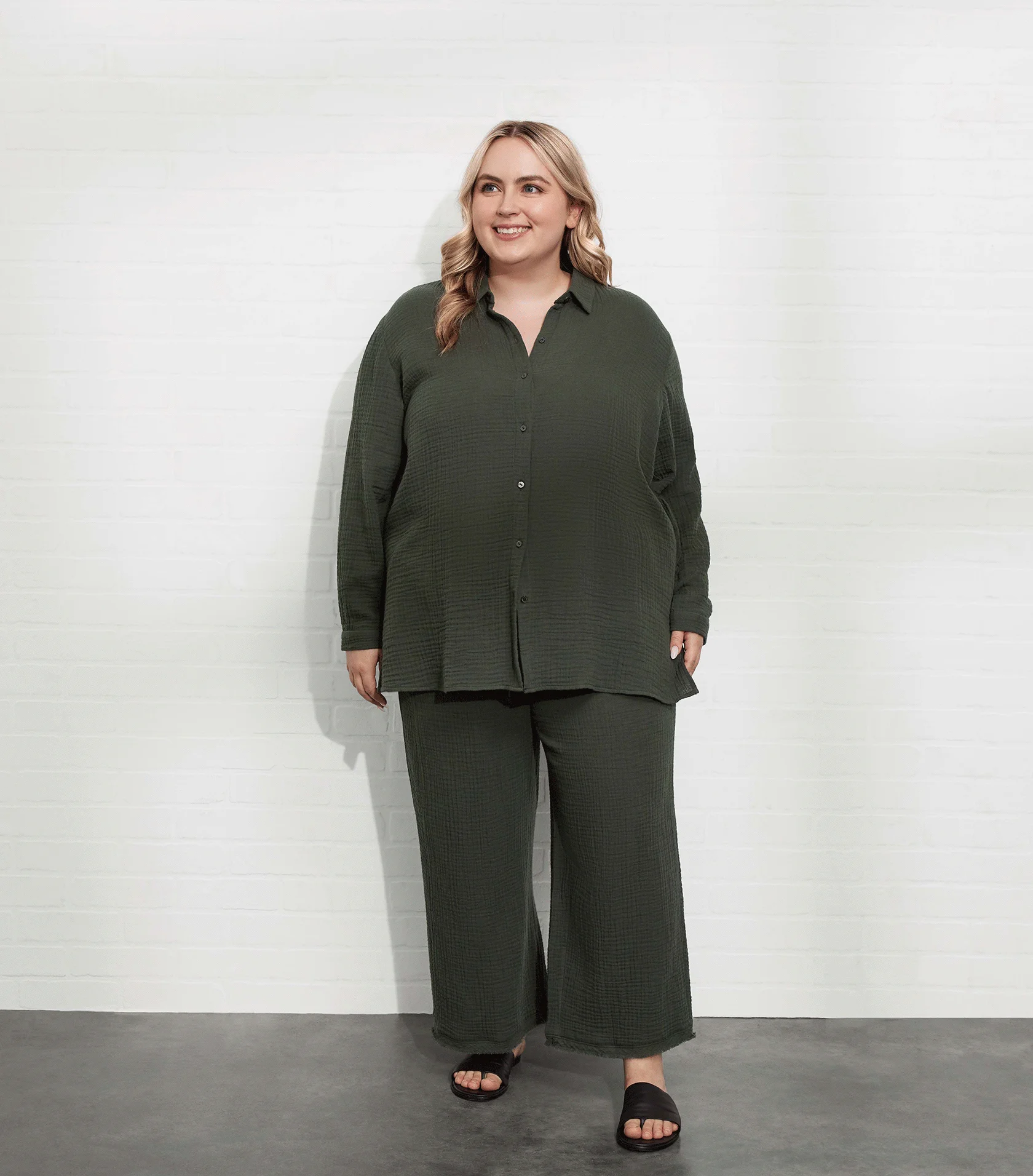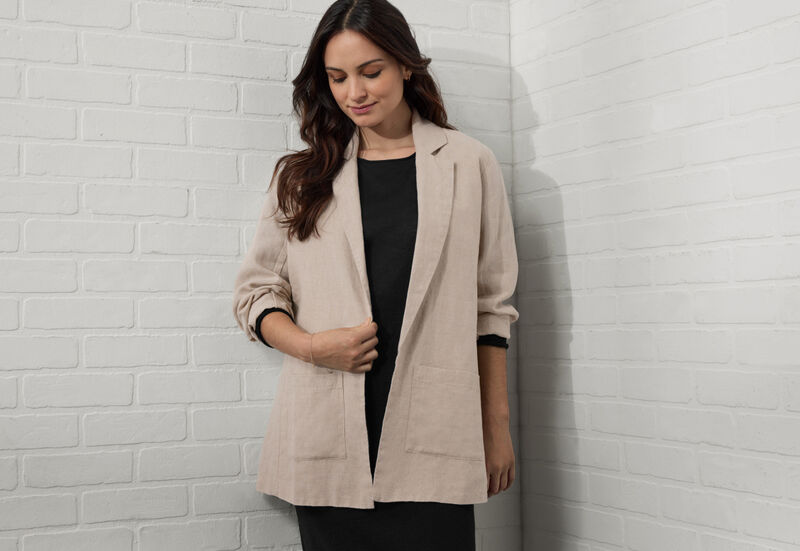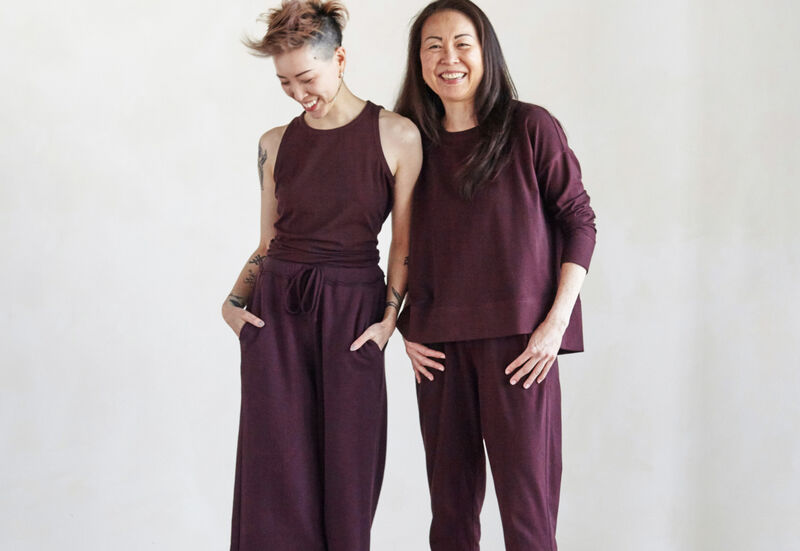Clothes for Every Body: The Art & Science of Fit
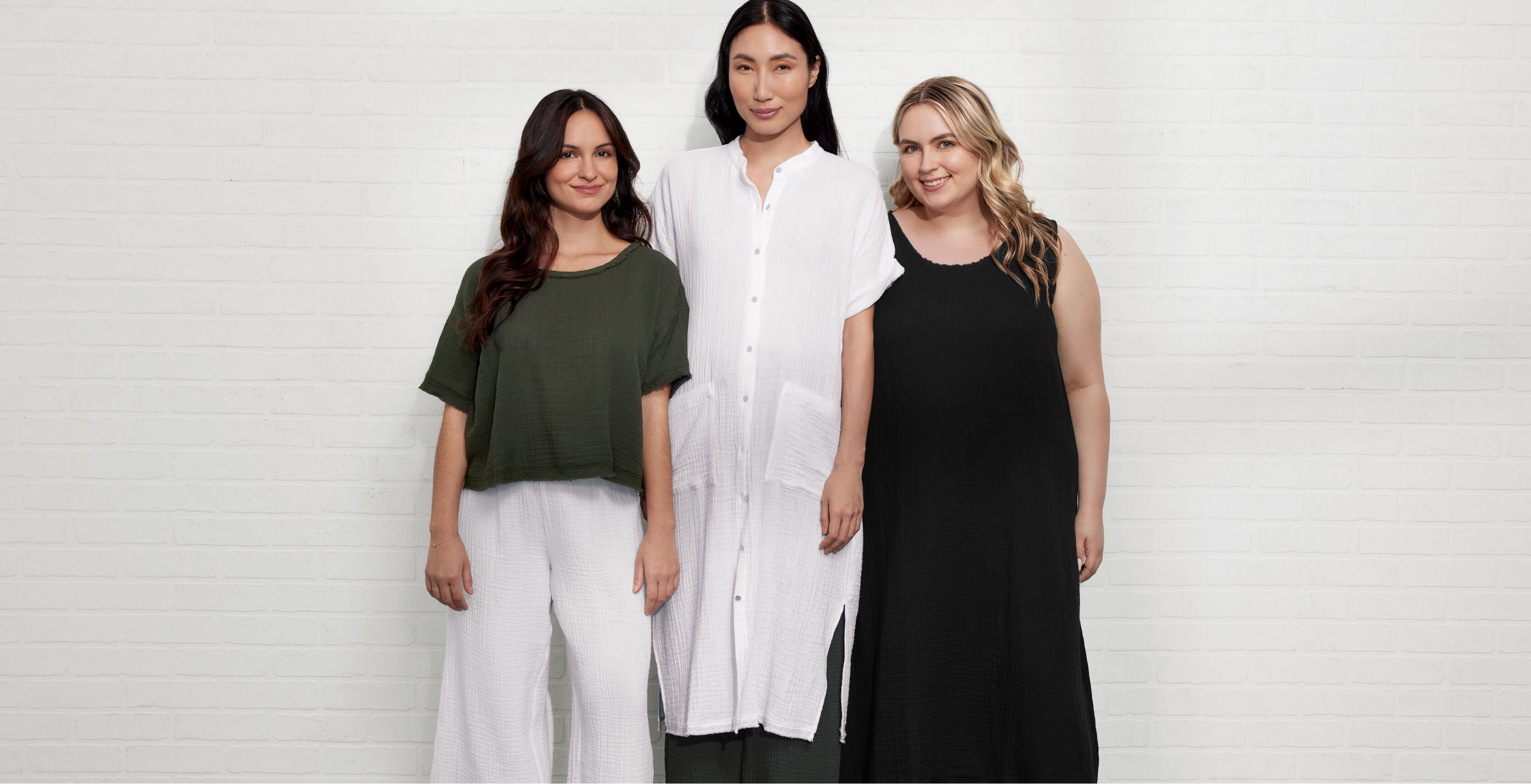
What goes into designing a more inclusive line that works across a wide range of body types? A lot of complex engineering—and a little creativity.
No matter your personal style or preferred attire, there’s one thing that unites all who wear clothes: a deep frustration over finding items that fit. Sizing remains one of the great quandaries of the fashion industry, as anyone who has spent time in a dressing room can attest.
Today, there are several different industry standards for calculating size, but no universal guidelines, which means that each brand is left to determine its own rules.
Creating consistency and inclusivity in sizing has been a core value at EILEEN FISHER ever since Eileen founded the business in 1984 with four simple pieces. That first collection aspired to make women’s lives easier and more stylish, while also offering silhouettes with enough ease to work for a diversity of body types.
In the nearly four decades since, EILEEN FISHER has married design with technical engineering in order to create a system of elegant and well-fabricated clothes that last. It became clear in recent years, though, that our sizing needed to adapt in order to better serve every customer. It’s a mathematical challenge to make a pattern for a piece of clothing that also translates to all sizes and body types, according to Liz Wisler, Vice President of Technical Design at EILEEN FISHER, “but that was our ideal. We’ve been talking about inclusive sizing for quite some time.”
Inclusive sizing is premised on the belief that customers, regardless of size and body shape, deserve access to a brand’s full range of styles. “We had started to evolve our line as a system where different garments work really well together, and we wanted to bring greater fit consistency to the product. Our goal was to simplify the size offerings while giving our Plus customer more choices,” Wisler says.
In 2020, after months of rigorous collaboration between the design teams and the technical designers, EILEEN FISHER introduced its new extended size range, which includes XXS-3X. The path to greater inclusivity required a technical overhaul and a level of ingenuity that reshaped how we size our clothes. This helped us to realize a broader imperative: The creation of a system of dressing that offers simple, timeless shapes. All of the pieces on our line are designed to work together as a whole, allowing customers the freedom to build a versatile wardrobe that dresses up or down from one season to the next. By ensuring that our system also works for a full range of sizes, we can give everyone access to the design possibilities of the EILEEN FISHER line.
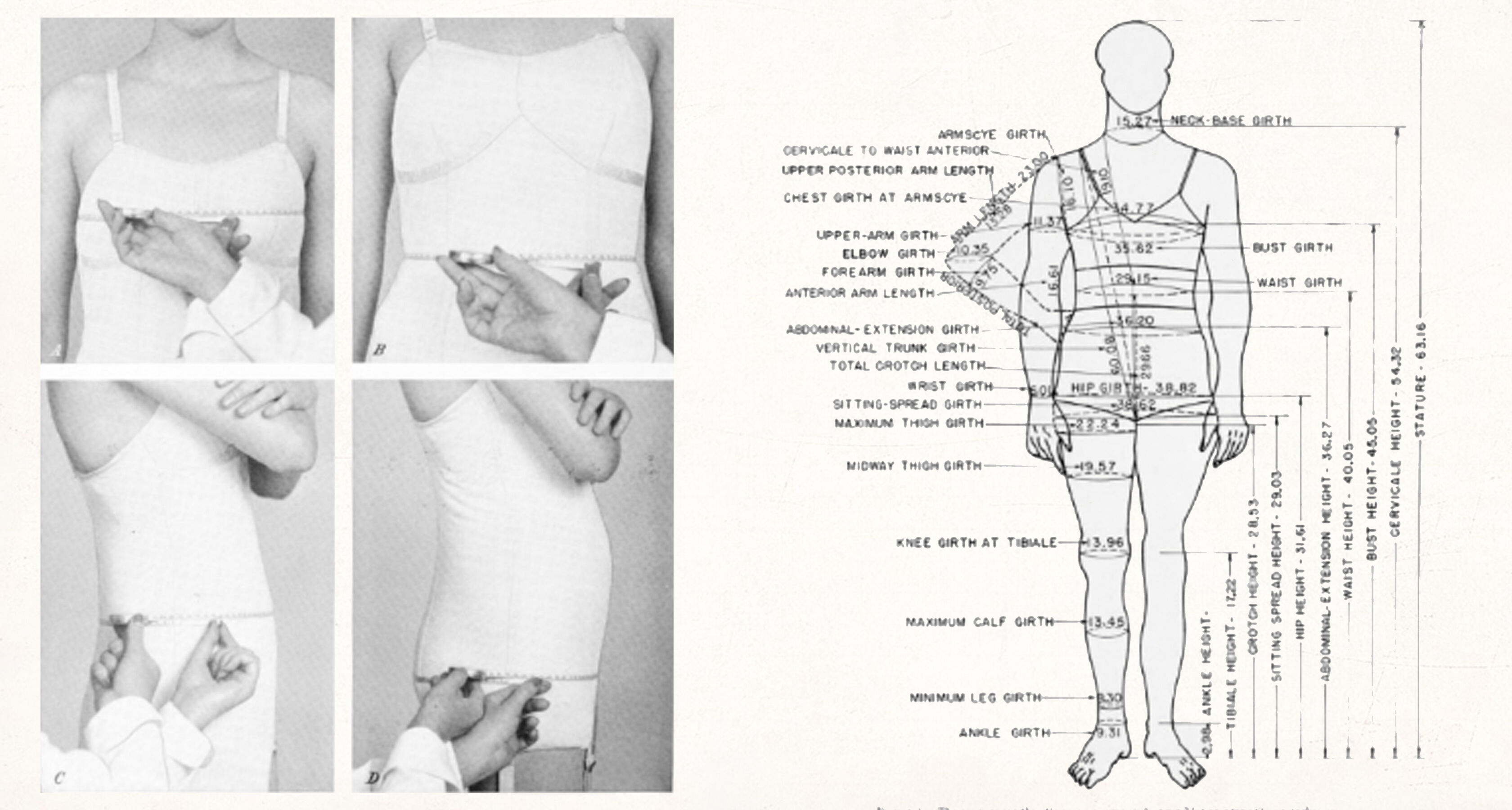
An excerpt from Women‘s Measurements for Garment & Pattern Construction, a 1941 report by the USDA that aimed to provide manufacturers with measurements to improve the fit of women’s clothing.
One Size Does Not Fit All: A Brief History of Fit
In the 1930s, the US clothing industry had a major dilemma. American designers were finally coming into their own against the dominant Parisian couture houses, and ready-to-wear was on the rise as mass manufacturing matured. Previously, most people made—or had a professional make—their clothes using custom tailoring or patterns that could be fitted to individual bodies. As more women began buying clothes off the rack and through mail-order catalogues, they were being “harassed by the difficulties involved in obtaining properly fitting clothing,” the US Department of Agriculture declared in a 1941 report.
The USDA became one of the first agencies to study how clothes might be sized to fit the majority of women in the country. Their researchers gathered a volunteer group of about 15,000 individuals and took 58 body measurements. They extrapolated from that sample to offer guidance on fitting and fabricating clothes.
A decade later, the National Bureau of Standards built off those measurements to create a Commercial Standard for sizing. Out of this came a system that is still largely in use today, despite the fact that it is based on historical data that no longer represents the sizes of average American women. The majority of women now wear a size 16 and above, and yet the industry as a whole hasn’t fully adjusted to that reality. What has developed, instead, is a tiered system of sizing in which the terms Petite, Missy and Plus size are used.
Plus size and inclusive design are often conflated, but the two offerings are quite different. Plus size refers, traditionally, to any size above 16. Most clothing lines separate Plus from the rest of a collection, and fewer styles from a brand’s overall collection are offered. Inclusive sizing, on the other hand, eliminates the Plus size category altogether and instead offers the same styles across all sizes.
A major challenge in dressing a human body is that one measurement cannot serve as the means for setting proportionate standards. Bust size, for instance, was traditionally used in the 1940s to determine dress sizing, however a larger bust doesn’t necessarily equate to a taller person.
Inclusive design, then, necessitates a level of technical complexity. As you add more sizes to one pattern, “it becomes harder to control the points of measure,” Wisler explains. A person’s hip or waist size may be bigger, but her shoulder size may not change proportionately, and her sleeve length doesn’t get any longer,” Wisler says. Learning to control the myriad points of measure on a garment is both an art and a science, and this is where the job of taking a style from a sketch to a finished product gets really interesting, Wisler says. “We technical designers consider ourselves creative designers as well as engineers of design.”
Art Meets Science
Traditionally, the EILEEN FISHER line was divided into those three classic categories—Petite, Missy and Plus—and not all styles were offered in the Plus category. The process of shifting to a more inclusive size range meant overhauling the entire system of sizing, eliminating previous measurements and completely rewriting internal clothing measurements.
“With our inclusive sizing, we grade up from a size small, which is a size 8, by six sizes,” Wisler explains. This is known as the grade rule, or the mathematical methodology that determines how much a measurement changes from one size to the next. These detailed calculations are used to dictate fit within the line and they require a complicated set of equations that take into consideration numerous dimensions. One simple sweater without a collar, for instance, has more than twenty separate points of measure in the EILEEN FISHER grade rule.
Item by item, the technical design team rewrote the grade rules for every piece of clothing to range from XXS to 3X. From there, the designers made a garment sample in a size small and size 1X to assess the fit. “We had an excellent plus-sized fit model and we got her feedback,” Wisler explains. “We could see where things were distorting as we were going up in size.”
Armhole shapes, particularly for sleeveless styles, were one of the team’s biggest challenges. “We don’t use bust darts, so the bust and the armhole can gape. We had to come up with measurements to control for that,” Wisler says. “We’ve now got this massive mathematical chart for each style, and its plus and minus fractions.”
In the process of tweaking the grading, some of the existing sizes shifted ever so slightly—for instance, a size large is currently a bit smaller than it had been.
Once a style is approved, the designers create a complete “tech pack” composed of measurements, grade rules and other key standards to send to the vendors for production.
In addition to grade rules, the line solidified around three standard silhouettes. “Bodies are shaped differently, which also means that cuts need to be considered,” Wisler says. This is where our signature fits come in—Slim, Easy and Boxy. These fits provide even more individuality within the line by offering a variety of different proportions, with Slim giving a more body-skimming fit, Easy providing a relaxed silhouette and Boxy a generous fit that drapes from the body.
With this new set of grade rules and standardized measurements in place across the three fits, the designers now have a consistent guideline that they can reference as they create new styles.
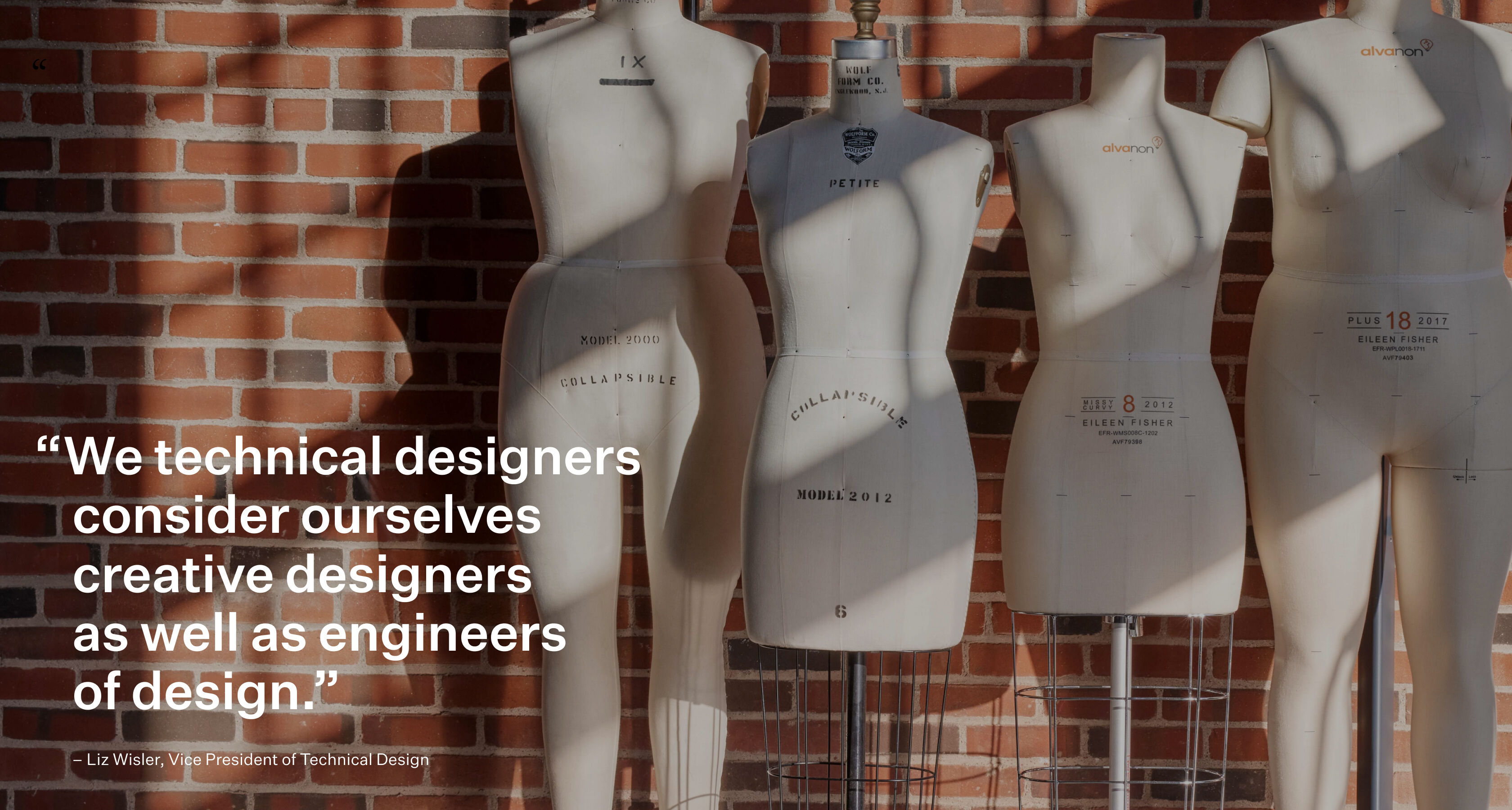
Clothes for every body, featuring our organic cotton gauze classic collar shirt and wide-leg pant.
The Complete Package
There’s more to building an inclusive line than complicated mathematics. There are the decisions behind things like fabric, fabrication and accessories. A design philosophy that includes clean lines and simple shapes also helps make clothes work for different body types.
EILEEN FISHER returns to signature shapes year after year, like the box-top, the shawl collar coat and the wide pant, and employs new textures, colors and small design tweaks to refresh for the seasons. When a new style is introduced by the design team, the technical designers ensure that it fits into the system of extended sizing. “If we feel like the existing grade rule is not working, we re-evaluate and see if we have to change the grade rule to support that specific style,” Wisler says.
Other inclusive design details include elastic in pant and skirt waists to add ease and adjustability; drawstrings capable of tailoring a style to your body type; wrap dresses and tops that offer various ways of wearing one piece; and crinkle-pleated fabric in dresses and tops that create flattering, slimmer silhouettes.
Accessories are also integral. Scarves and ponchos are coordinated to complete the outfits and to add unique styling, interest and, when desired, additional coverage.
Each item of clothing in the line becomes adaptable, then, even with the day-to-day shifts of our bodies, our moods and our needs, offering a dynamic system of interchangeable styles. Most important, this whole process has incorporated the feedback of customers through EILEEN FISHER store leaders. “We meet with them monthly and we ask for fit feedback,” Wisler says. Inclusive design is important not only for our customers, but for EILEEN FISHER’s commitment to sustainability. If you can build a dynamic wardrobe that lasts, one that adapts over the seasons with you, then fewer pieces can build a broader array of options.
Candy Coalman, EILEEN FISHER Store Leader in Bellevue, Washington, has noticed firsthand the customer reception to more inclusive sizing. By displaying all clothes together, rather than separating them into different sections, customers have a more positive and gratifying experience. “Many of our 1X+ customers are out shopping—or trying to shop—and they’re not finding their sizes at other retailers,” Coalman says. “Very few stores carry 1X+ sizes where we are. So, when this customer walks into our store and sees the depth and variety of our sizes, they are so happy. They feel seen and valued when they peruse a rack of our beautiful pieces and see their size. It’s a powerful experience, truly.”
